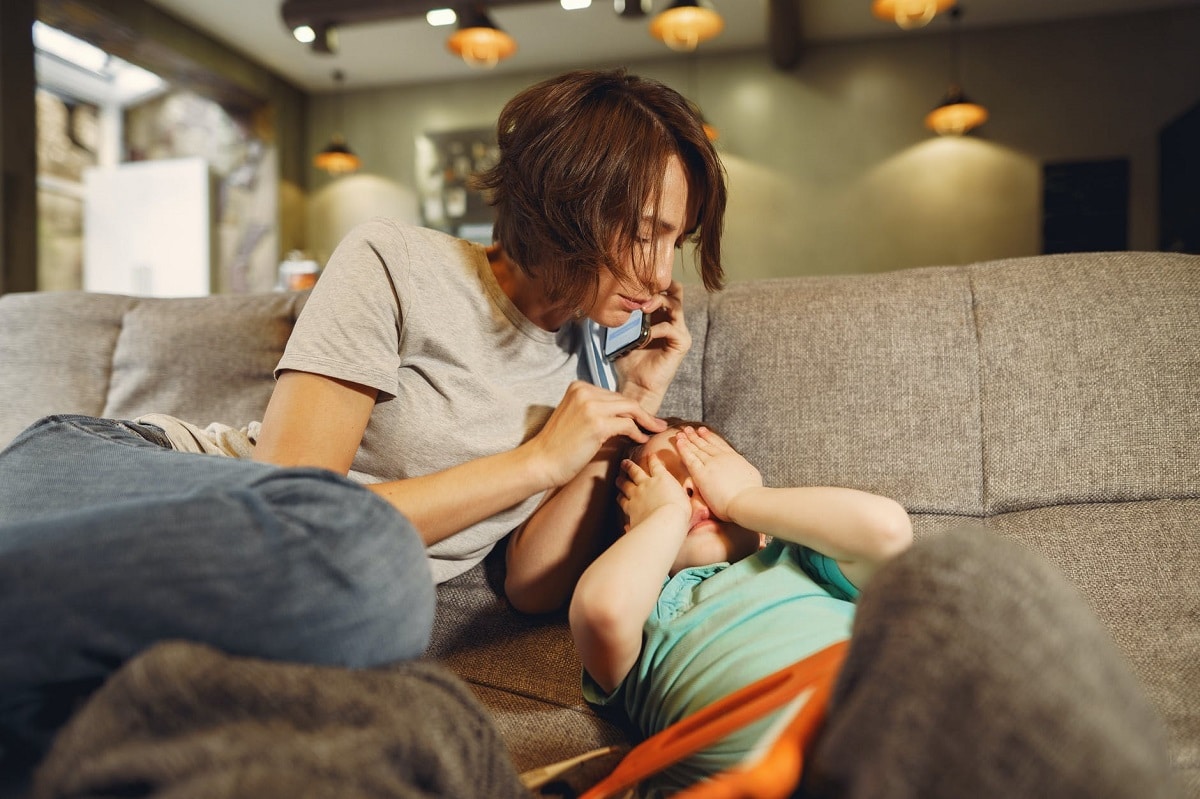
Childhood alopecia is rare. In fact, only 1% of those who go to pediatric dermatology consultations do so for this reason. It is, however, a problem that generates great stress for those who suffer from it and their families. But when should one start to worry?
The anguish of seeing how the hair falls out or even bald spots appear leads many parents to go to the consultation to know the reasons. And it is that behind the hair loss in childhood there may be a simple shedding of hair for hormonal reasons, but also congenital, infectious or emotional causes.
The causes
Not all cases of hair loss in children are alopecia. And when they are, it is important to know that in most cases they are temporary and can be resolved with the help of a professional. So the first step is to go to a professional to Make a diagnosis. Because as we have already mentioned, the causes and triggers of alopecia in children can be very varied:

- congenital origin or birth.
- Genetic factors, those that are transmitted from a living being to its descendants.
- infectious processes on the scalp.
- Diseases: hypothyroidism, lupus erythematosus and childhood cancer, among others.
- metabolic alterations.
- nutritional deficit (zinc or iron deficiency, for example).
- by traction or tension in the hair.
- Emotional causes such as a divorce, a transfer or situations of harassment.
- produced by fungi, usually after contact with animals.
Types of alopecia
There are different types of alopecia; some develop during the first months of life, while others can develop throughout childhood and adolescence. Likewise, these can have permanent or temporary consequences.
But let's go step by step. How are the types of childhood alopecia that have permanent and irreversible consequences known? And what about those that are temporary and can be reversed with the help of treatment? It is known as scarring and non-scarring alopecia.
- scars. In this type of alopecia, the follicle is destroyed, so hair loss is permanent and irreversible. They are cases of lichen planus pilaris, folliculitis decalvans or congenital alopecia.
- Not scarring. Non-scarring alopecias, on the other hand. They have a cure although their treatment is different depending on the type of alopecia.
And what alopecias are the most common in children up to 12 years of age? Below we list them, so that you know in summary what they are its origin and its symptoms, but not for you to play doctors. Remember that only a professional can diagnose them.
- Occipital alopecia. It occurs in babies, but it does not occur as many people think due to rubbing against the mattress of the crib or the stroller. The process begins during pregnancy when the hair grows and then falls out. All except those found in the occipital area that continue to grow and fall off in the first three months of life.
- Congenital triangular alopecia (TCA). It is characterized by the presence of a triangular-shaped plaque that does not have hair, in the temporal region of the scalp, on one or both sides. It starts in the womb and is permanent, there is no treatment.
- anagen effluvium. Minors suffer abundant hair loss in a short period of time, mainly due to cancer treatments, such as chemotherapy or radiotherapy; the intake of some medications and certain reactions of the immune system.
- Alopecia areata. Alopecia areata is a disease of multifactorial origin. It occurs when some autoimmune factor causes the follicles to abruptly stop producing hair after hair loss, mainly in the occipital and temporal areas. It only affects 4% of children who go to see a dermatologist for hair loss.
- Traction alopecia. Pigtails, braids or very tight hairstyles can cause hair loss. In some cases, very few, it becomes irreversible, so it is recommended to avoid generating such tension in the hair.
- Trichotillomania. Compulsively pulling out your hair It is related to children with anxiety processes and usually requires psychological intervention. They can start both in childhood and adolescence.
- Ringworm alopecia. Caused by the presence of fungi. A localized area with hair loss is observed. It is spread by direct contact with another child, it can be in the nursery, by sharing a hairbrush or a towel. Home treatments should not be implemented, the dermatologist is the one who will indicate the appropriate medication.
Is your daughter/or losing her hair? Do not hesitate to consult your pediatrician if it lasts for no apparent reason or occurs suddenly. Worry, but do not be overwhelmed before knowing the diagnosis and knowing if it is childhood alopecia.